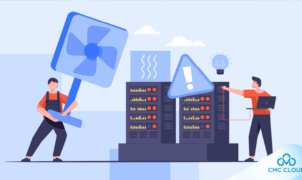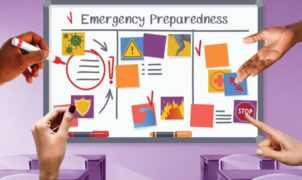Water leakage from an air conditioning system can lead to water loss and potentially cause damage, affecting both health and the living environment. Here are the steps and advice to prevent water leakage and utilize reliable and effective air conditioning troubleshooting services:
1. Recognizing Leakage Signs:
One of the primary indicators of water leakage from an air conditioning system lies in noticeable signs within or around the unit. Here are key pointers to recognize potential leaks:

- Visual Signs: Water stains, dampness, or pooling water near the air conditioning unit, especially beneath it, often indicate an underlying leak. These signs may appear as discolored spots or wet patches on floors, walls, or ceilings around the HVAC unit.
- Unusual Sounds: Uncommon noises, such as gurgling, hissing, or dripping sounds coming from the air conditioning system, might signal water leakage. Any atypical sound or irregularity in the system’s operation should be carefully investigated to pinpoint the source of the leak.
- Odor or Humidity: Foul or musty odors coupled with increased indoor humidity levels could indicate moisture accumulation due to a leak. A damp or moldy smell near the HVAC unit suggests potential water leakage and requires immediate attention to prevent further damage.
- Reduced Cooling Performance: A sudden decline in the cooling efficiency of the air conditioning system might also signify a potential leak. When a unit operates with a compromised cooling performance, it could be a result of water leakage affecting the system’s functionality.
- Condensate Drain Issues: An observable lack of condensate drainage or excessive moisture accumulation around the drain pan can be indicative of a clogged or malfunctioning drainage system. This condition often leads to leaks if not addressed promptly.
- Ice Formation: Unusual ice buildup on the evaporator coils or anywhere else in the system indicates potential issues such as reduced airflow or a refrigerant leak, leading to moisture problems and subsequent leaks.
Recognizing these signs promptly is crucial for early detection and mitigation of water leakage issues. Addressing leaks in their early stages can prevent further damage to the HVAC system, minimize potential health hazards, and avoid costly repairs or replacements. Regular inspection and maintenance can significantly contribute to identifying and resolving leakage problems before they escalate.

2. Turning Off the System and Inspection:
When observing signs of water leakage from an air conditioning unit, promptly shutting down the system and conducting a thorough inspection is crucial. Here’s a detailed approach to handling this phase:
- Shut Down the System: Immediately turn off the power supply or halt the operation of the air conditioning unit to prevent further water leakage and mitigate potential damage. Shutting off the system eliminates the risk of continued leakage and minimizes the likelihood of further complications.
- Safety Precautions: Before initiating any inspection or troubleshooting, ensure safety measures are in place. This includes wearing appropriate protective gear, such as gloves and safety goggles, and exercising caution when handling electrical components or moving parts within the HVAC system.
- Visual Inspection: Begin the inspection by visually examining the air conditioning unit and its surroundings for visible signs of leakage. Look for water stains, dampness, or pooling water around the unit, and carefully inspect components like pipes, drains, and the condensate pan for any signs of moisture accumulation or damage.
- Check Pipes and Drainage Lines: Inspect the condensate drainage lines, refrigerant pipes, and other connecting lines for potential leaks, blockages, or damages. Pay close attention to any signs of corrosion, rust, or wear that might be contributing to the water leakage issue.
- Verify Drain Pan Condition: Examine the condensate drain pan, which collects moisture, for cracks, deterioration, or blockages. A damaged or clogged drain pan can lead to water overflow, resulting in leaks.
- Assess Filter and Coil Condition: Check the condition of air filters and evaporator coils. A dirty or clogged filter can impede airflow, causing the evaporator coils to freeze, leading to excess condensation and potential leaks.
- Detect Sound or Odor: While the system is off, pay attention to any unusual sounds or odors emanating from the HVAC unit. Sometimes, peculiar noises or unpleasant smells might offer clues to the location or cause of the leakage.
- Documentation and Noting Observations: Document all observations, including visual findings, unusual sounds, or any peculiar odors noticed during the inspection. Detailed notes aid in communicating observations to HVAC professionals or repair technicians for accurate diagnosis and repair.
Performing a systematic and thorough inspection after shutting down the system enables homeowners to assess the situation, identify potential causes of leakage, and determine the necessary actions or repairs needed to resolve the issue effectively. If homeowners encounter difficulties or are unsure about the inspection process, seeking professional assistance is advisable to ensure safety and accurate diagnosis of the problem.

3. Seeking Air Conditioning Troubleshooting Services:
When dealing with water leakage issues from an air conditioning system, engaging professional air conditioning troubleshooting services becomes imperative. Here are detailed steps involved in seeking these services:
- Choosing Experienced Professionals: Start by researching and selecting reputable HVAC (Heating, Ventilation, and Air Conditioning) companies or certified technicians known for their expertise in troubleshooting air conditioning systems. Look for professionals with extensive experience and positive reviews in handling similar issues.
- Checking Credentials and Licensing: Verify that the selected HVAC professionals or technicians hold the necessary licenses, certifications, and insurance required for practicing in the field. Proper credentials ensure competence and compliance with industry standards.
- Seeking Recommendations or Referrals: Ask for recommendations from friends, family, or acquaintances who have previously utilized air conditioning troubleshooting services. Referrals often provide firsthand experiences and insights into the reliability and quality of services provided.
- Requesting Assessment and Estimates: Contact the chosen HVAC service providers or technicians to schedule an assessment of the air conditioning unit experiencing leakage issues. During the assessment, request a detailed evaluation of the problem and an estimation of repair costs or service charges.
- Understanding the Proposed Solution: Upon receiving the assessment and repair estimate, ensure a clear understanding of the proposed solutions, including the specific repairs or replacements required to address the water leakage issue. Seek clarification on any technical jargon or procedures mentioned in the assessment.
- Comparing Services and Costs: Compare the services, warranties, and costs offered by different HVAC service providers or technicians. Evaluate the value offered in terms of service quality, reputation, response time, and overall pricing before making a decision.
- Inquiring about Guarantee or Warranty: Inquire about warranties or guarantees provided for the service rendered. Reliable HVAC professionals often offer warranties for their services or parts replaced, ensuring customer satisfaction and peace of mind.
- Establishing a Service Agreement: Upon finalizing the service provider, establish a clear service agreement outlining the scope of work, timelines, costs, warranties, and any other terms and conditions agreed upon. Ensure all verbal agreements are also documented in writing.
- Scheduling Service Appointment: Coordinate with the chosen HVAC service provider or technician to schedule a suitable service appointment. Be flexible with scheduling to ensure timely inspection and repair of the air conditioning unit to prevent further damage.
- Communicating Concerns or Expectations: Clearly communicate any specific concerns, preferences, or expectations regarding the service or repair process. Provide relevant information gathered during the initial inspection to facilitate a thorough diagnosis.
Seeking professional air conditioning troubleshooting services ensures accurate diagnosis, effective resolution, and proper maintenance of the air conditioning system. Choosing reputable and experienced professionals significantly contributes to resolving water leakage issues and restoring the unit’s optimal functionality.

4. Repairing and Replacement:
After the assessment and diagnosis of the air conditioning system, the repairing and replacement phase becomes pivotal in rectifying water leakage issues. Here’s a detailed breakdown of this phase:
- Identifying the Cause: Based on the assessment conducted by HVAC professionals, identify the root cause of the water leakage. It could be due to damaged pipes, clogged drains, a faulty condensate pan, deteriorated insulation, or other issues.
- Repairing Damaged Components: Address the identified issues by repairing or replacing the damaged components. This might involve fixing leaks in pipes, clearing clogged drains, or replacing worn-out parts such as gaskets, seals, or insulation.
- Drain Line Clearing: Clearing clogged drain lines is crucial, as blockages often cause water to back up and overflow, leading to leaks. HVAC technicians use specialized tools or solutions to remove blockages and ensure smooth drainage.
- Sealing and Insulation: Properly seal any gaps or leaks in the air conditioning unit’s structure to prevent water seepage. Ensuring proper insulation around pipes and components prevents condensation buildup that may contribute to leaks.
- Condensate Pan Maintenance: Repairing or replacing a damaged or malfunctioning condensate pan is vital. A damaged pan can result in water overflow and subsequent leaks. Technicians might repair minor damage or opt for a complete replacement if necessary.
- Testing Repairs: After making the necessary repairs, conduct a comprehensive system test to verify the effectiveness of the fixes. This includes checking for any remaining leaks, ensuring proper drainage, and confirming that the system operates efficiently.
- Replacement of Faulty Components: In cases where repairs are not feasible or the components are severely damaged, replacements become essential. Technicians will replace malfunctioning parts like drain pans, damaged pipes, or defective seals to resolve the leakage issue.
- Quality Assurance: Reliable HVAC service providers often perform a final quality check to guarantee that the repairs or replacements effectively address the water leakage problem. This ensures that the system operates optimally and leakage risks are minimized.
- Educating Homeowners: HVAC professionals may provide homeowners with guidance on preventive maintenance practices to avoid future leakage issues. They might offer advice on regular checks, filter replacements, and general care to uphold the system’s functionality.
- Documenting Repairs: Keeping detailed records of the repairs conducted, including the components replaced, repair methods used, and any warranties offered, is essential. This documentation serves as reference material for future maintenance or warranty claims.
The repair and replacement phase is critical in addressing water leakage problems in an air conditioning system. It involves meticulous repairs, replacements, and quality assurance checks to ensure that the system functions efficiently and remains free of leaks. Employing skilled HVAC professionals for these tasks ensures effective solutions and prevents reoccurrence of leakage issues.

5. Regular Maintenance and Usage Guidance:
Implementing routine maintenance practices and following usage guidelines are essential in preventing water leakage issues and maintaining the optimal performance of the air conditioning system. Here’s a detailed breakdown of this phase:
- Scheduled Maintenance Checks: Set up a regular schedule for HVAC system maintenance checks, preferably conducted by professional technicians. This routine inspection includes examining components, cleaning filters, and ensuring the system operates efficiently.
- Filter Cleaning/Replacement: Regularly clean or replace air filters according to manufacturer recommendations or as per observed requirements. Clogged filters restrict airflow, leading to reduced efficiency and potential condensation issues that can cause leaks.
- Condensate Drain Maintenance: Keep condensate drain lines clear and free from debris or obstructions to prevent blockages that could lead to water backup and subsequent leaks. Regularly flushing the drains with a mixture of water and vinegar can help prevent buildup.
- Inspecting Insulation and Seals: Periodically check the insulation around pipes and seals within the HVAC system. Damaged insulation or worn-out seals can contribute to condensation buildup, leading to leaks. Replace or repair as needed.
- Checking Refrigerant Levels: Ensure refrigerant levels are adequate and there are no leaks in the refrigerant lines. Low refrigerant levels or leaks can cause the evaporator coil to freeze, leading to excess condensation and potential leaks.
- System Calibration: Calibrate the air conditioning system periodically to ensure it operates at the optimum settings. Incorrect calibration can lead to inefficiencies, increased condensation, and eventual leaks.
- Usage Guidelines: Provide homeowners with guidance on proper usage of the air conditioning system. Advise them to avoid drastic temperature fluctuations, set appropriate thermostat levels, and ensure proper ventilation to reduce moisture accumulation.
- Educating Homeowners: Educate homeowners about the importance of regular maintenance and provide them with a checklist or guidelines to conduct basic inspections between professional service visits. Encourage them to report any unusual sounds or observations promptly.
- Seasonal Preparations: Before each cooling season, encourage homeowners to perform basic checks, such as inspecting the system for visible damage, cleaning debris around the outdoor unit, and ensuring proper airflow.
- Recording Maintenance History: Maintain a detailed maintenance log documenting all inspections, repairs, replacements, and system adjustments. This history provides valuable information for technicians during subsequent visits and aids in identifying recurring issues.
Regular maintenance and adhering to usage guidelines significantly contribute to the prevention of water leakage problems in air conditioning systems. It not only ensures the system’s efficient operation but also extends its lifespan while reducing the likelihood of unexpected breakdowns or leaks. Encouraging homeowners to prioritize routine maintenance fosters a healthier and more reliable HVAC system.

Water leakage from an air conditioning system can pose significant issues. Utilizing reliable and effective air conditioning troubleshooting services will help you resolve the problem safely and promptly, ensuring the system operates reliably and efficiently for an extended period.
Source: Admin compiled from the Internet







 Welcome to LawyerNote, your premier destination for expert legal counsel tailored to your unique needs. At LawyerNote, we specialize in navigating the complexities of the legal system, offering comprehensive solutions to our valued clients. With a team of seasoned attorneys covering diverse fields including corporate law, family law, and criminal defense, we’re equipped to handle a wide spectrum of legal matters. Our unwavering commitment to excellence, integrity, and client satisfaction sets LawyerNote apart. Whether you’re grappling with a complex litigation case or seeking guidance on business transactions, LawyerNote is your trusted legal partner every step of the way.
Welcome to LawyerNote, your premier destination for expert legal counsel tailored to your unique needs. At LawyerNote, we specialize in navigating the complexities of the legal system, offering comprehensive solutions to our valued clients. With a team of seasoned attorneys covering diverse fields including corporate law, family law, and criminal defense, we’re equipped to handle a wide spectrum of legal matters. Our unwavering commitment to excellence, integrity, and client satisfaction sets LawyerNote apart. Whether you’re grappling with a complex litigation case or seeking guidance on business transactions, LawyerNote is your trusted legal partner every step of the way.




